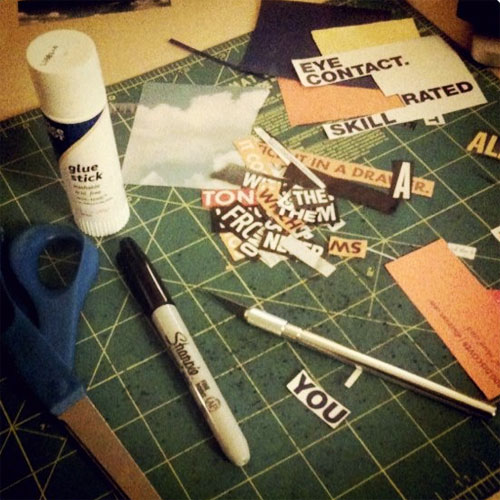
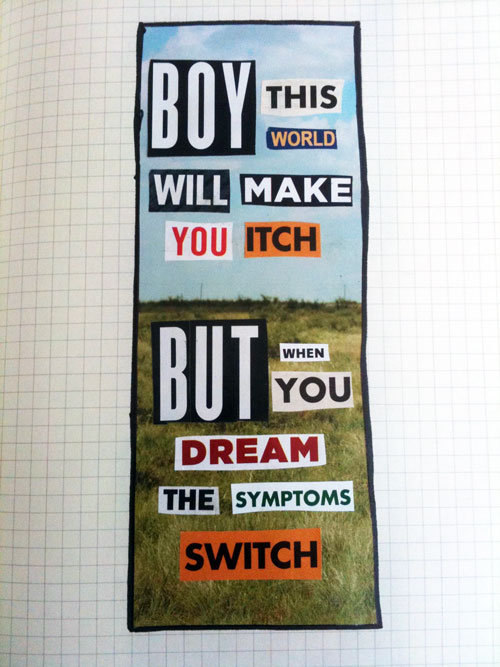
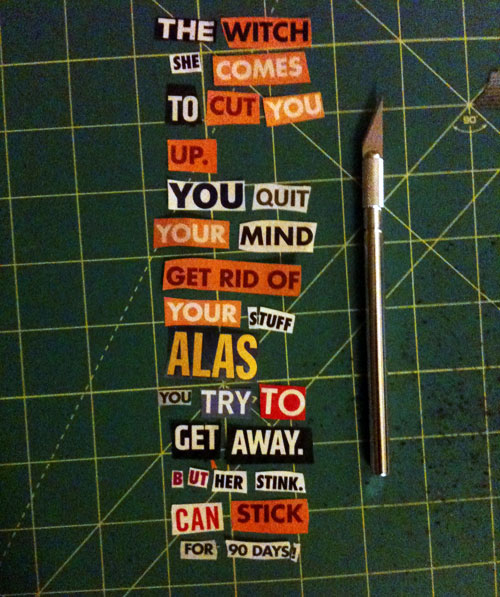
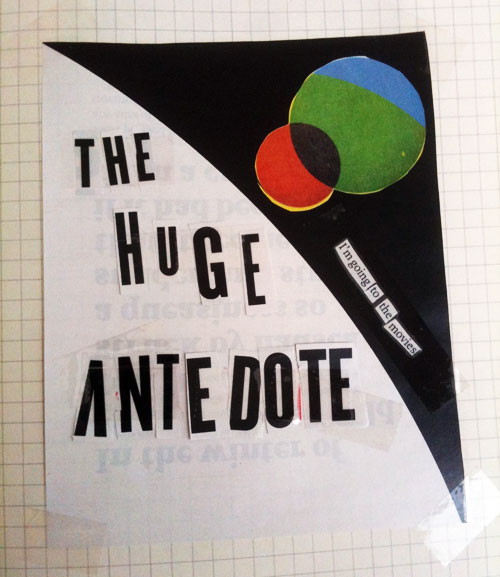
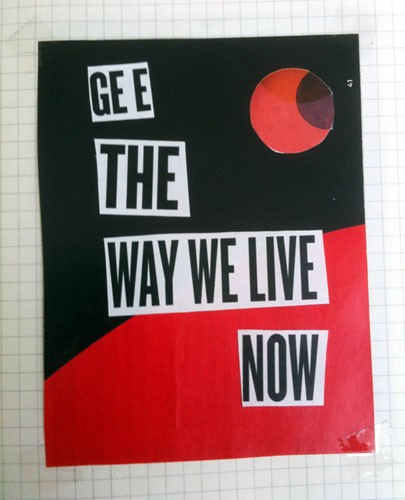

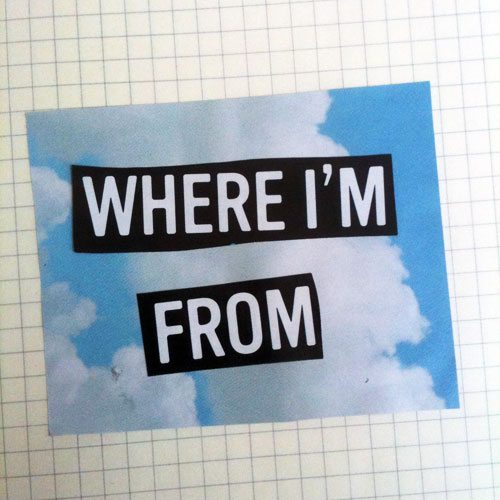
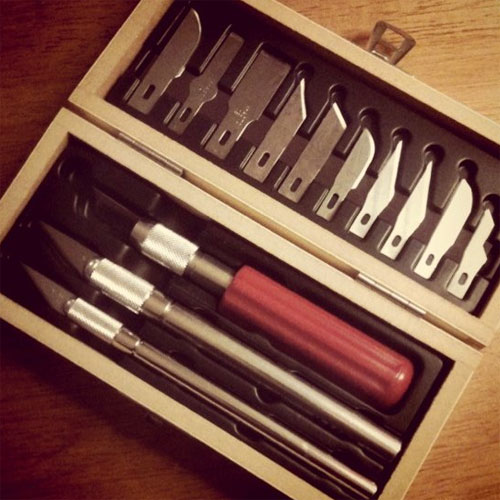
I’m working on a whole notebook of these for fun while I watch TV. Here’s the first batch.
Things that happened in 2010:
January: we released the “Agoraphobia” print on 20×200. (Sold out in December!) I made the “Creativity Is Subtraction” poem, which became a sort of slogan/rallying cry for the book. Started keeping broadsheets. Had some work featured in the “Old Media / Old News” exhibit in St. Louis. Wrote “On Keeping A Logbook,” about keeping a daily list instead of a diary.
February: I gave a talk on “Visual Thinking For Writers” at VizThink Austin. Gave my first Pecha Kucha slideshow talk, which went over really well. Posted “25 Quotes To Help You Steal Like An Artist.” (Followed it up with 25 more in June.) Drew on sticky notes for TEDxAustin.
I’d had the idea for a while to launch a site where folks could post their own blackout poems, but I didn’t have the right technology yet to really make it happen. Then, back in January, Tumblr enabled a feature where users could submit their own posts. A month later, I finally launched a Newspaper Blackout Tumblr–I had no idea that by the end of the year it would have over 12,000 followers.
March: SXSW!!!
April: Released another 20×200 print, “The Travelogue.” Newspaper Blackout came out on the 13th, almost 2 years after I sold the book to HarperCollins. Had a release party at BookPeople here in Austin. My friends Wire & Twine released the “Creativity Is Subtraction” t-shirts. Oh, and I got to meet on of my cartoonist heroes, John Porcellino.
May: I almost lost my mind doing promotion for the book, and posted my sketchbook and a mini sketchbook manifesto.
June: I sweated a lot and tried to explain my “you don’t have to go to college” tag.
July: I gave a talk on my experiences with publishing and social media at TEDxPennQuarter in Washington, D.C. Gave a workshop and showed off some poems at the Austin Museum of Art.
August: summer was winter. The best thing that happened was that my best friend shipped my drums down to me from Ohio, and I started playing in a band with my friends. There’s nothing like making music with your friends.
September: PBS Newshour ran a segment on the poems, and we opened our new store. I celebrated five years of blogging, and then wrote about how to keep it up in “Punt.”
October: I drew The National on Austin City Limits and a Teleportal Reading. Met Maira Kalman! Celebrated 5 years of blacking out and started posting Newspaper Blackout horoscopes.
November: I drew Lyle Lovett taping ACL and Fun Fun Fun Fest. Posted another notebook.
December: After three years of designing websites at the law school, I took a new job as copywriter for Springbox. (I’ll be starting the new gig in January 2011.) Back in January this year, I wrote “The Builder and the Keeper,” a post of my thoughts on web design that pointed towards where I’d go at the end of the year. And a few days ago I started a new little mini-site called “I never thought I’d say this, but…”
* * *
So, yeah. Not bad. Every year, no matter what, I always say, “I wish I had read more.” Last year I tweeted: “For me, healthy+happy = books. My biggest failure in the past couple years has been the decline of my reading habit. Trying to remedy that.” And I’m still trying.
But all in all, 2010 was a good year. I got no beef with it. Here’s to 2011. Hope to read more books, make more art, and shed a few pounds. Happy New Year!
* * *
The folks at PBS asked me to be a guest blogger for their “Remotely Connected” blog. I blogged about the upcoming NOVA episode, “What Are Dreams?”
Read my post at the Remotely Connected blog, or below:
“I like to sleep so I can tune in and see what’s happening in that big show. People say we sleep a third of our lives away, why I’d rather dream than sit around bleakly with bores in “real” life. My dreams…are fantastically real movies of what’s actually going on anyway. Other dream-record keepers include all the poets I know.”
– Jack Kerouac
Like all artists since the beginning of time, I’ve looked to dreams for inspiration.
I started writing down my dreams as a teenager, after I got my hands on Jack Kerouac’s Book of Dreams–dreams he collected by scribbling in his notebook the minute he woke from sleep.
Later on in college, I studied just enough psychology to learn that the creative process mirrors the dreaming process. As the film director David Mamet says in his book On Directing Film, “The dream and the film are the juxtaposition of images in order to answer a question.” Not only can the dream provide us with material, but the process of dreaming itself can provide us with inspiration towards a process of working.
Any artist will tell you that when the work is going really well, it’s as if you’re taking dictation. The characters speak because they want to speak. The act of art-making is an attempt to fall into a kind of dream state. We do this by abandoning the linear and the logical for the non-linear and the free-associative. This is when creativity happens.
After watching this NOVA episode, I pulled out my pen and crayons and attempted to digest what I had seen through drawing–juxtaposing images in space. It was not unlike dreaming, watching the images come out of my hand…
Derek writes in,
I am very new to drawing and wondered if there are any pens that you would recommend…
I don’t recommend any particular drawing tools, because I think tools are very personal and idiosyncratic–I mean, the tools that work for one artist might not work for another. One of my artist friends won’t draw with anything more than a .5mm mechanical pencil. I, on the other hand, don’t like to draw with anything less bold than a 1mm gel pen.
Regardless, here’s a list of what I carry around in my bag:
The tools change, based on the occasion: when I go out with my wife to a movie or a concert, I carry a Sharpie or a gel pen and a stack of index cards.
Feel free to share your own favorite notebooks/drawing tools for Derek in the comments!
This site participates in the Amazon Affiliates program, the proceeds of which keep it free for anyone to read.